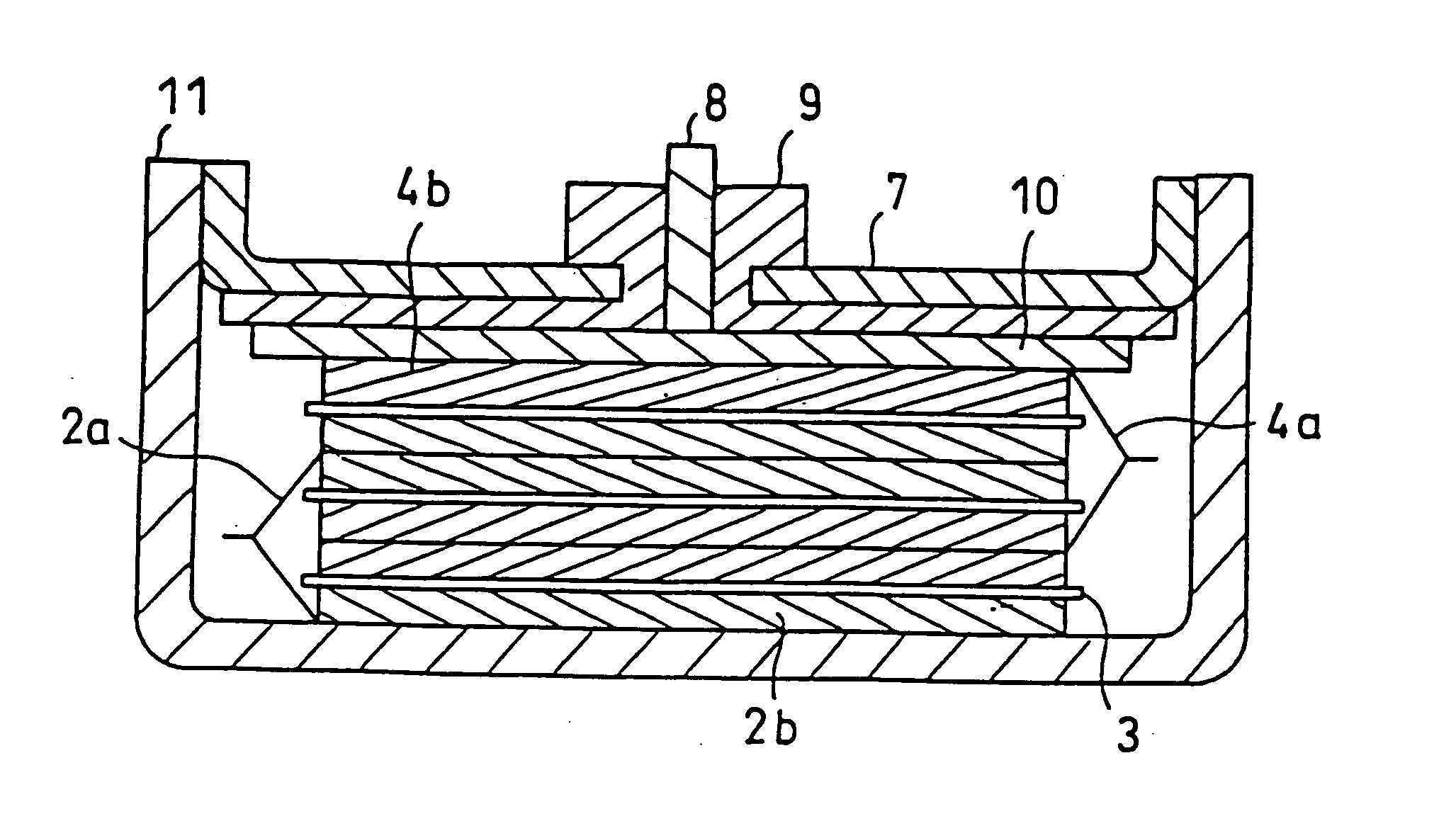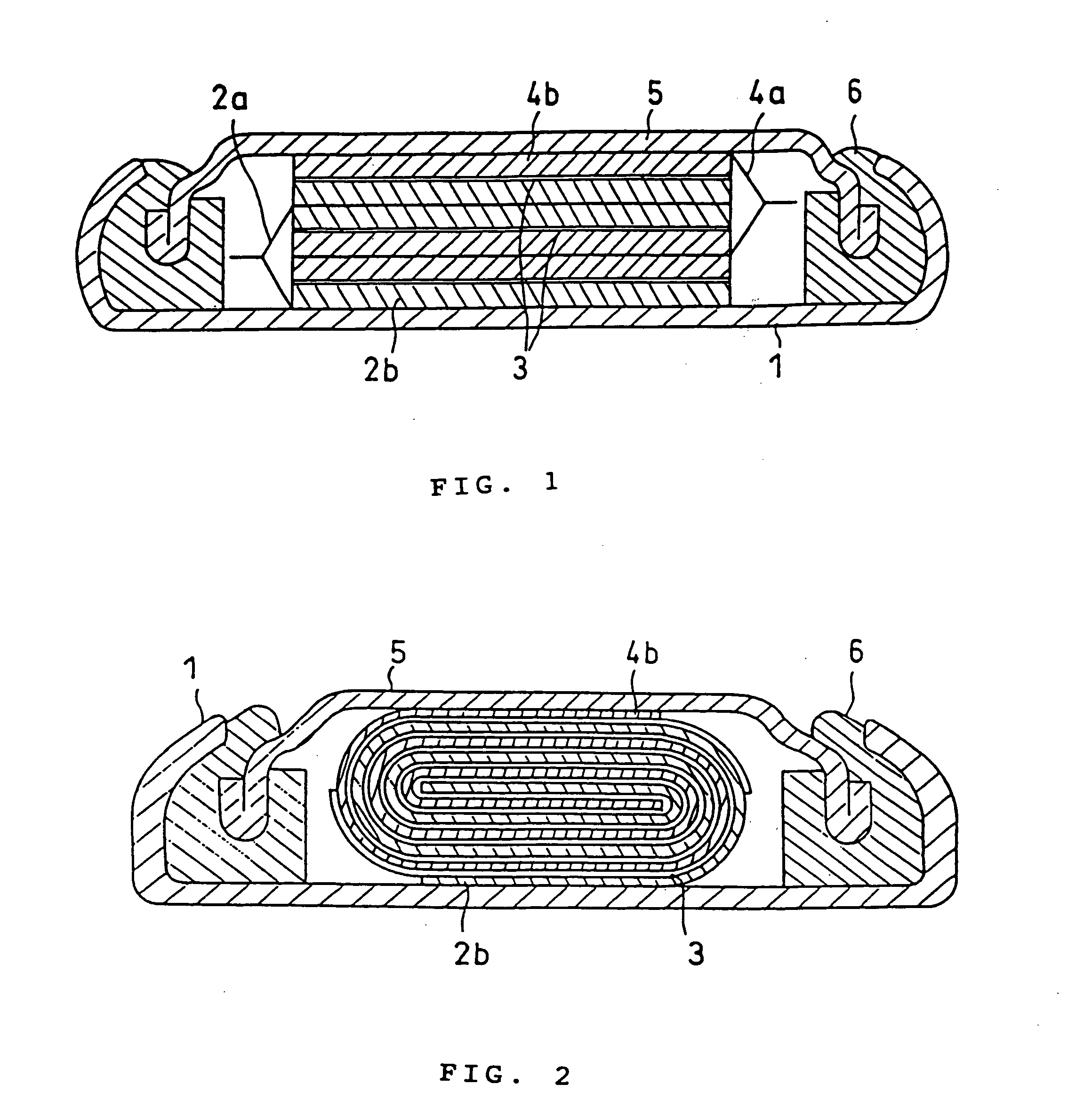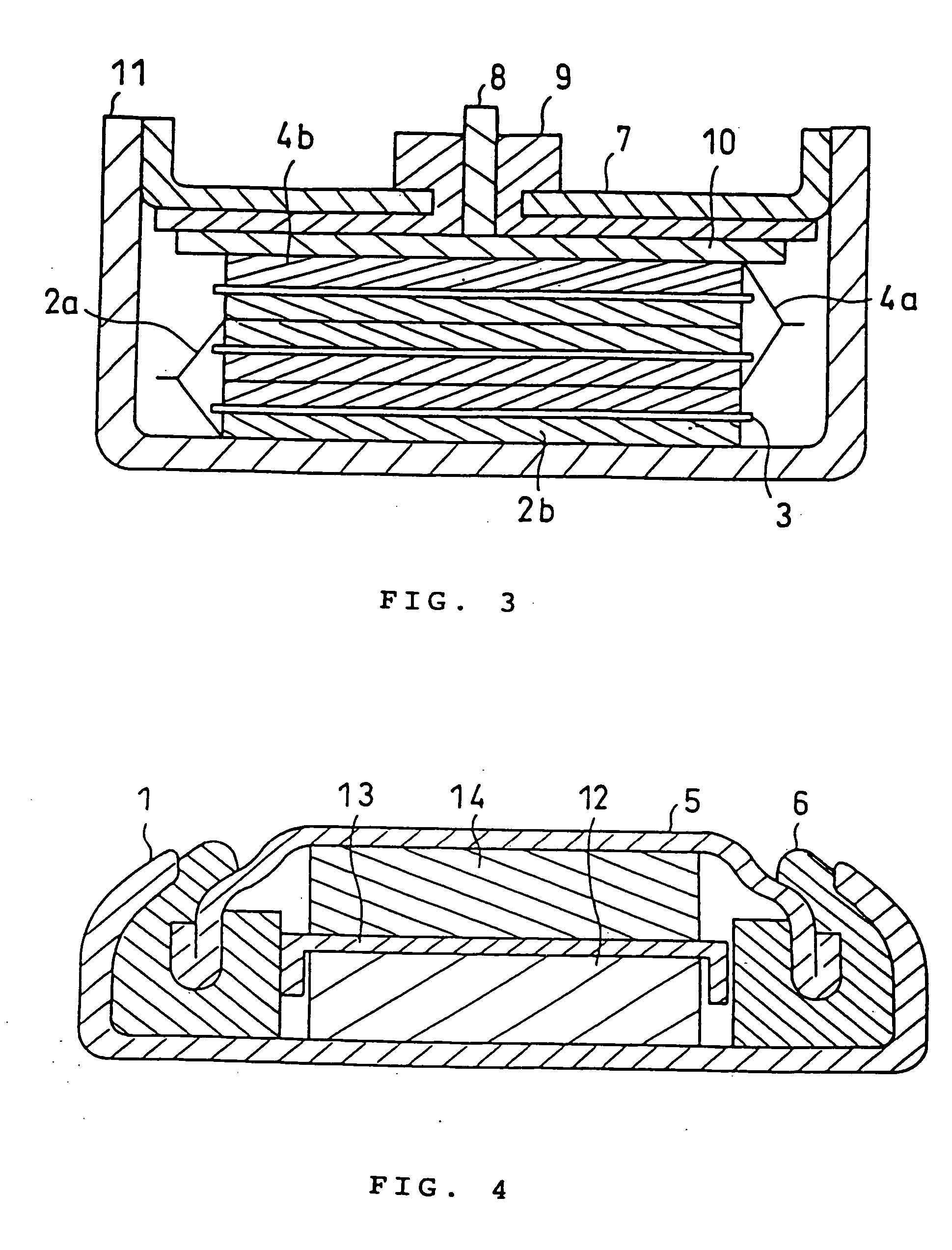Flat non-aqueous electrolyte secondary cell
a non-aqueous electrolyte, secondary cell technology, applied in the direction of non-aqueous electrolyte cells, wound/folded electrode electrodes, sustainable manufacturing/processing, etc., can solve the problem of limiting the miniaturization of these cells at present, inconvenient use, and inability to meet the needs of large-scale production and use, so as to achieve the effect of significantly improving the discharge characteristics of the heavy-loading secondary cell
- Summary
- Abstract
- Description
- Claims
- Application Information
AI Technical Summary
Benefits of technology
Problems solved by technology
Method used
Image
Examples
example 1
[0060] A process for producing the cell of the present invention in Example 1 is described by reference to the sectional drawing in FIG. 1.
[0061] First, 5 parts by weight of acetylene black and 5 parts by weight of graphite powder were added as electrically conductive agents to 100 parts by weight of LiCoO2, and 5 parts by weight of polyvinylidene fluoride was added as a binding agent, and these materials were diluted with N-methyl pyrrolidone and mixed to give a cathode mix for cell in a slurry form. Then, this cathode mix was applied with a doctor blade onto one side of an aluminum foil of 0.02 mm in thickness as a cathode current-collecting body 2a, followed by drying it. This procedure of application and drying was repeatedly conducted until the thickness of the resulting coating of the active material-containing layer reached 0.39 mm, whereby the cathode active material-containing layer 2b was formed on one side of the aluminum foil to prepare a single-coated cathode.
[0062] T...
example 2
[0068] A cell was constructed in the same manner as in Example 1 except that the coating of the active material-containing layer in each of the cathode and anode in the electrode group was 0.22 mm in thickness on one side, and the number of double-coated cathodes or double-coated anodes laminated internally in the electrode group was 2. The number of faces where a cathode was opposite an anode via a separator is 5 in total, and the total sum of the areas of the opposing cathodes and anodes is 8.5 cm2.
example 3
[0069] A cell was constructed in the same manner as in Example 1 except that the coating of the active material-containing layer in each of the cathode and anode in the electrode group was 0.15 mm in thickness on one side, and the number of double-coated cathodes or double-coated anodes laminated internally in the electrode group was 3. The number of faces where a cathode was opposite an anode via a separator is 7 in total, and the total sum of the areas of the opposing cathodes and anodes is 11.8 cm2.
PUM
 Login to View More
Login to View More Abstract
Description
Claims
Application Information
 Login to View More
Login to View More - R&D
- Intellectual Property
- Life Sciences
- Materials
- Tech Scout
- Unparalleled Data Quality
- Higher Quality Content
- 60% Fewer Hallucinations
Browse by: Latest US Patents, China's latest patents, Technical Efficacy Thesaurus, Application Domain, Technology Topic, Popular Technical Reports.
© 2025 PatSnap. All rights reserved.Legal|Privacy policy|Modern Slavery Act Transparency Statement|Sitemap|About US| Contact US: help@patsnap.com



